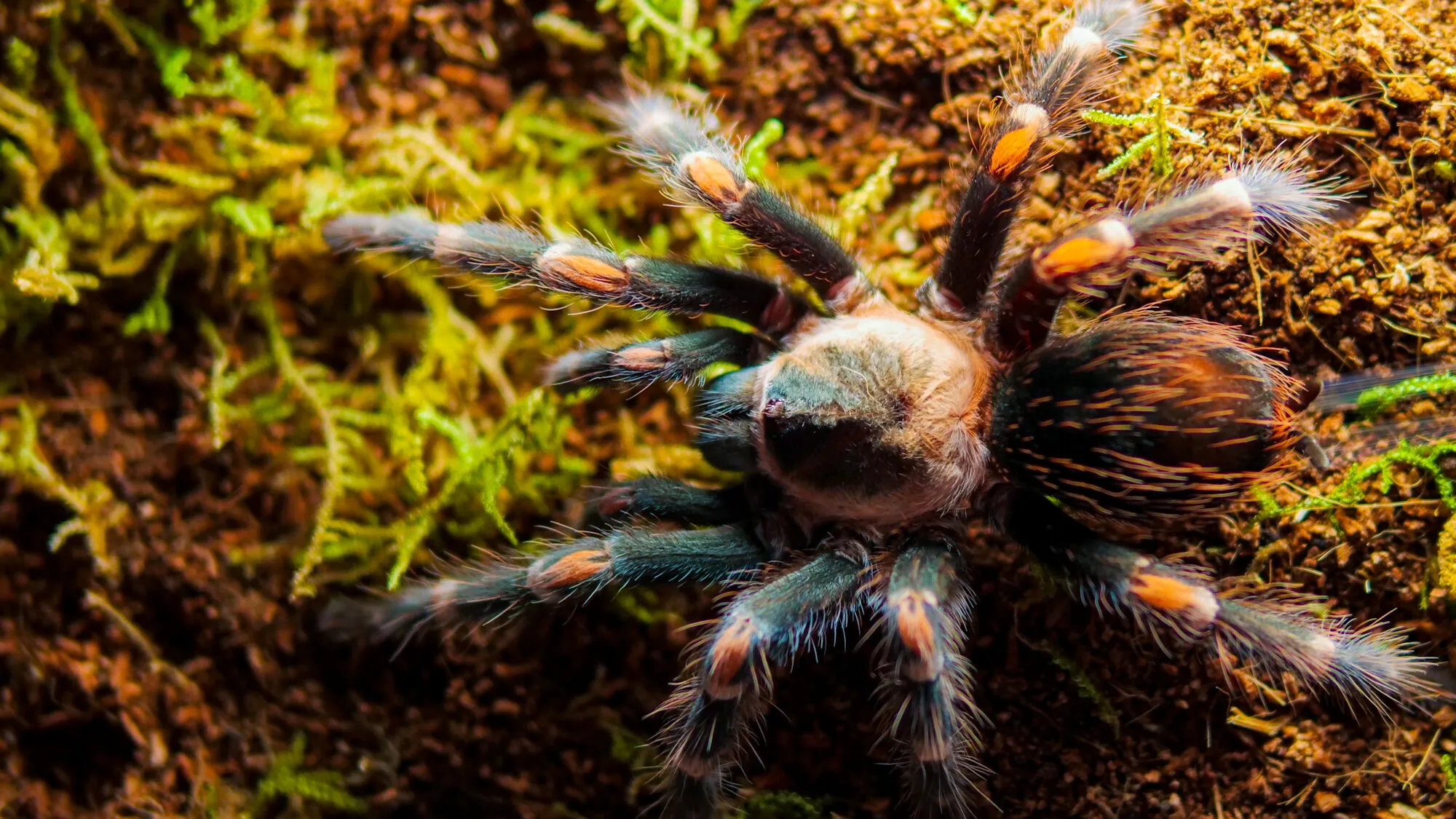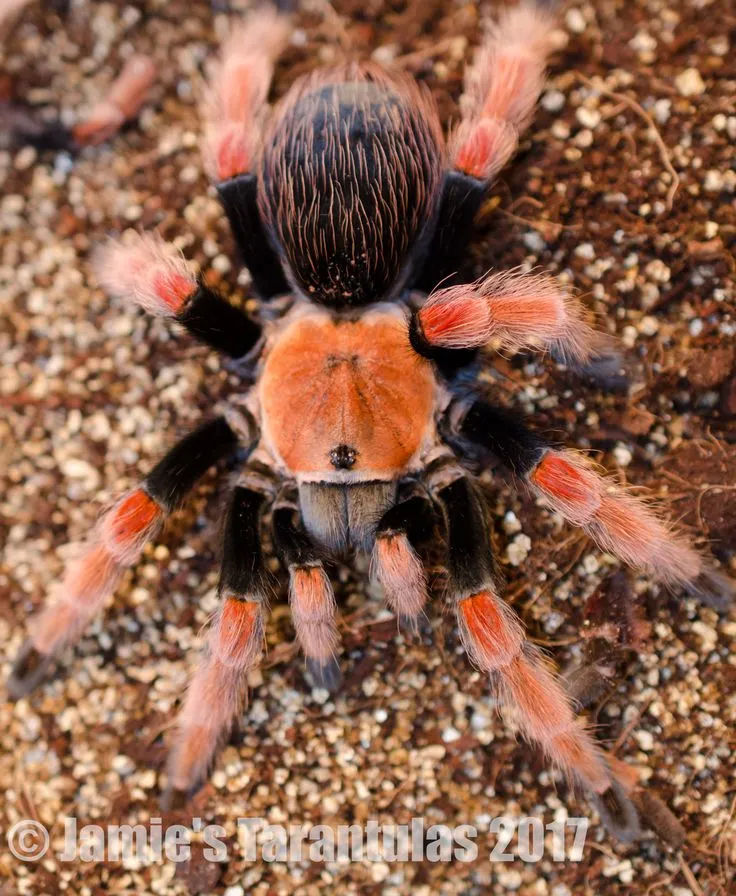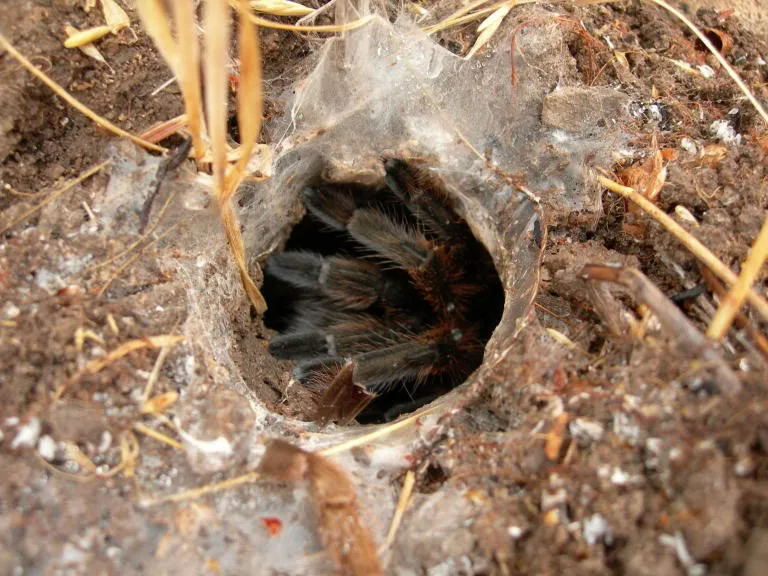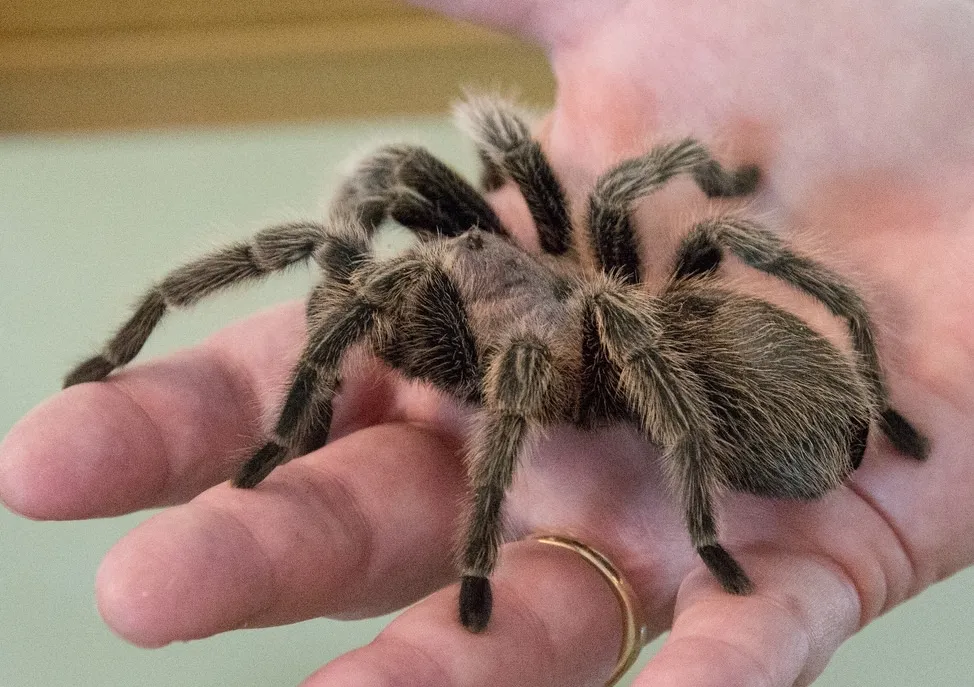Tarantula Care Guide
Bringing a tarantula into your home can be a rewarding experience. These fascinating creatures are relatively low-maintenance compared to many other pets, but they do require specific care to thrive. This comprehensive guide provides the top 5 tips for new tarantula owners, covering everything from choosing your first tarantula to ensuring its health and well-being. Understanding the needs of your tarantula will not only make your pet happy but also provide an enriching experience for yourself. By following these guidelines, you can ensure a healthy and fulfilling life for your eight-legged friend. Proper care involves research, preparation, and consistent attention to detail, all of which are crucial for a successful and enjoyable tarantula-keeping journey.
Choosing Your First Tarantula
Selecting the right tarantula is the first and arguably most important step in responsible pet ownership. Different species have varying temperaments, care requirements, and sizes. It’s essential to choose a species that aligns with your experience level and lifestyle. Some tarantulas are more docile and beginner-friendly, while others are more defensive or require specific environmental conditions. Researching different species ensures that you are prepared to provide the best possible care. This preparation minimizes stress for both the tarantula and the owner, making the initial experience enjoyable and setting the stage for a positive long-term relationship.
Researching Different Tarantula Species

Before acquiring a tarantula, thoroughly research the different species available. Consider factors such as their size, lifespan, venom potency, temperament, and care requirements. Popular beginner-friendly species include the Chilean Rose Hair, the Pinktoe tarantula, and the Curly Hair tarantula. These species are generally docile, have relatively low venom toxicity, and are relatively easy to care for. More experienced keepers might consider species like the Gooty Sapphire Ornamental or the Cobalt Blue tarantula. These are known for their vibrant colors, but they also require more specific care and are known to be more defensive. Websites, books, and online forums are excellent resources for gathering information.
Selecting a Healthy Tarantula
Once you’ve decided on a species, you must select a healthy specimen. Observe the tarantula’s behavior and physical condition. Look for a tarantula that is active, alert, and responsive to its environment. Avoid specimens that appear lethargic, uncoordinated, or show signs of illness, such as a swollen abdomen or a lack of appetite. Check for any missing limbs or signs of parasites. A healthy tarantula should have a shiny carapace (the top of its body) and a plump abdomen. If possible, ask the seller about the tarantula’s feeding habits and molting history. Buying from a reputable breeder or pet store is highly recommended to ensure you’re getting a healthy and well-cared-for tarantula.
Setting Up the Perfect Tarantula Habitat
Creating the right environment is key to a tarantula’s well-being. The enclosure should mimic the tarantula’s natural habitat, providing shelter, security, and appropriate conditions for its needs. A properly set up habitat reduces stress, promotes normal behaviors such as burrowing or webbing, and prevents health problems. The size of the enclosure, the type of substrate, ventilation, temperature, and humidity are all vital components to a healthy tarantula enclosure. Attention to detail will result in a happy and thriving pet. Poor setup can lead to illness, stunted growth, and shortened lifespans, emphasizing the importance of a suitable habitat.
Choosing the Right Enclosure

The enclosure size should be appropriate for the tarantula’s size and species. A general rule of thumb is to provide an enclosure that is at least twice the tarantula’s leg span in width and length and at least one and a half times its leg span in height. The enclosure should be escape-proof, with a secure lid. Glass or clear plastic enclosures are popular because they allow for easy viewing. The enclosure type depends somewhat on whether the tarantula is terrestrial (ground-dwelling), arboreal (tree-dwelling), or fossorial (burrowing). Terrestrial species need more floor space, while arboreal species require more vertical space. Fossorial species, on the other hand, will need deeper substrate for burrowing. Always prioritize the comfort and safety of the tarantula when choosing an enclosure.
Substrate Selection and Setup
The substrate is the material that covers the bottom of the enclosure and serves several important functions. It provides a surface for the tarantula to walk on, allows it to burrow, and helps to maintain humidity. The ideal substrate depends on the species of tarantula. For most terrestrial species, a mix of coconut fiber, peat moss, and a small amount of vermiculite is ideal. Arboreal species often prefer a substrate that retains moisture, such as a mixture of coco fiber and sphagnum moss. The substrate should be deep enough to allow for burrowing if your tarantula is a burrowing species. The substrate should always be kept clean and replaced regularly to prevent the buildup of mold and bacteria. Also, ensure that the substrate is not too dusty, as this can irritate the tarantula’s respiratory system.
Providing Adequate Ventilation
Proper ventilation is crucial for maintaining healthy air quality and preventing the buildup of mold and bacteria. The enclosure should have ventilation holes, usually in the lid and sides. The number and size of the ventilation holes depend on the species and the humidity requirements. Ensure that the ventilation holes are small enough to prevent the tarantula from escaping. Excessive humidity without sufficient ventilation can lead to fungal infections, which can be fatal. In contrast, insufficient ventilation can cause the buildup of harmful gases. Monitor the enclosure and adjust ventilation as needed to maintain optimal air quality.
Maintaining Proper Temperature and Humidity

Tarantulas are ectothermic, meaning they rely on external sources for heat. The ideal temperature range varies depending on the species, but most species thrive at temperatures between 75°F and 85°F (24°C and 29°C). Use a thermometer to monitor the temperature in the enclosure. Avoid placing the enclosure in direct sunlight, as this can overheat the tarantula. Humidity levels are also important. Again, the ideal humidity level varies depending on the species, but most species require a humidity level of 60% to 80%. Use a hygrometer to monitor humidity levels. To increase humidity, mist the enclosure with water or add a water dish. Provide a water dish appropriate for the size of the tarantula. Do not allow the enclosure to become excessively damp, as this can also lead to health issues.
Feeding Your Tarantula
Feeding your tarantula is another essential aspect of their care. The diet should be appropriate for the species and size of the tarantula. It is critical to feed your tarantula nutritious food in the right amounts and at the correct frequency. A well-fed tarantula will be more active, healthier, and less stressed. Conversely, underfeeding can lead to starvation and stunted growth, while overfeeding can cause health problems. Understanding the nutritional needs and feeding habits of your tarantula will ensure it lives a long and healthy life.
Appropriate Food Choices
The primary food source for tarantulas in captivity is insects. Crickets, mealworms, and dubia roaches are common choices. The size of the prey should be appropriate for the size of the tarantula. As a general rule, the prey should be no larger than the tarantula’s body length. The prey should be gut-loaded before feeding. Gut-loading involves feeding the insects a nutritious diet before offering them to your tarantula. This ensures that your tarantula receives essential vitamins and minerals. Avoid feeding your tarantula wild-caught insects, as they may contain parasites or pesticides. Always make sure that any uneaten food is removed from the enclosure to prevent the buildup of mold and bacteria.
Feeding Frequency and Amount

The feeding frequency depends on the age and size of the tarantula. Spiderlings (young tarantulas) should be fed more frequently than adults. Spiderlings can be fed two to three times a week. Juveniles can be fed once a week. Adults can be fed once every one to two weeks. Adjust the feeding frequency based on the tarantula’s appetite and activity level. Do not overfeed your tarantula. Overfeeding can lead to obesity and other health problems. Overfed tarantulas can also become stressed and may have difficulty molting. Observe your tarantula and adjust the amount of food provided accordingly. The tarantula should consume the food relatively quickly after it is offered. Remove uneaten food within 24 hours.
Watering and Hydration
Tarantulas need access to fresh water at all times. Provide a shallow water dish that is appropriate for the tarantula’s size. The water dish should be easy to access and should not be too deep, as the tarantula could drown. Change the water in the dish regularly to keep it fresh and clean. Some tarantula keepers also mist their enclosures to provide humidity. However, excessive misting can lead to mold and bacterial growth, so it’s crucial to balance hydration needs with proper ventilation. Also, provide the water dish at a safe distance from the heat source, if one is used, to prevent the water from evaporating too quickly.
Handling and Interaction
While tarantulas are fascinating to observe, they are generally not animals that enjoy being handled. Tarantulas are fragile, and a fall from a height can cause serious injury. Also, they may bite or flick urticating hairs (small, irritating hairs) as a defense mechanism. It is important to understand the potential risks and the proper handling techniques before interacting with your pet. Minimize handling to reduce stress and to avoid injury to either the tarantula or yourself. Creating a safe and low-stress environment is one of the most important things you can do to care for your tarantula.
When to Handle Your Tarantula

Generally, it’s best to avoid handling your tarantula unless absolutely necessary. This minimizes the risk of stress, injury, and potential bites or irritation from urticating hairs. Necessary handling might include moving the tarantula to a new enclosure or during a health check. If you must handle your tarantula, do so with caution and only when essential. Observe the tarantula’s behavior and watch for any signs of stress or aggression before initiating contact. Before handling, make sure you have a safe plan and know where to put the tarantula back to its enclosure. Avoid handling immediately after a meal, as they are more vulnerable during this time.
Safe Handling Techniques
If you must handle your tarantula, approach it slowly and gently. Use a soft paintbrush or a similar tool to gently encourage the tarantula to move onto your hand. Avoid sudden movements and loud noises. Keep your hand close to the ground or a soft surface in case the tarantula falls. Never grab or squeeze the tarantula. Handle your tarantula over a soft surface. This prevents injury from falls. Wash your hands thoroughly before and after handling your tarantula. It’s best to handle your tarantula on a table or the floor, rather than standing up.
Recognizing Signs of Stress
Tarantulas can exhibit signs of stress when handled or if they are otherwise uncomfortable. Recognizing these signs can help you to avoid unnecessary handling or environmental stressors. Signs of stress include raising their front legs (a defensive posture), flicking urticating hairs, attempting to flee, or biting. If your tarantula shows signs of stress, immediately return it to its enclosure and leave it undisturbed. Provide a quiet and secure environment for your tarantula to recover. Minimize disruptions to the enclosure and avoid handling until the tarantula has calmed down.
Health and Common Issues

Like all living creatures, tarantulas can experience health problems. Being able to recognize common issues, from fungal infections to difficulties with molting, and knowing how to prevent and treat them is crucial. Regular observation of your tarantula’s behavior and physical condition can help to identify potential problems early. Early detection and prompt treatment often lead to successful outcomes. Being proactive and understanding the common health concerns can help ensure a long and healthy life for your tarantula. Consulting with a veterinarian or experienced tarantula keeper is often advisable if you suspect a serious health problem.
Recognizing Signs of Illness
Common signs of illness in tarantulas include a loss of appetite, lethargy, changes in behavior, and physical abnormalities. Look out for a swollen abdomen, tremors, or a lack of coordination. Other signs to watch for are unusual postures, the presence of parasites, and difficulty molting. If you observe any of these signs, it’s important to isolate the tarantula and consult with a veterinarian or an experienced tarantula keeper. Provide a quiet, stress-free environment and maintain appropriate temperature and humidity. The early detection of illnesses, such as fungal infections, is key to recovery.
Dealing with Molting
Molting is a natural process in which tarantulas shed their exoskeleton to allow for growth. This process can be stressful, so it’s important to provide a safe and undisturbed environment. During molting, the tarantula will typically stop eating and may lie on its back. Provide adequate humidity, and do not disturb the tarantula during this time. After molting, the tarantula’s new exoskeleton will be soft, and the tarantula will be vulnerable. Avoid handling or feeding the tarantula until the exoskeleton has fully hardened. The entire process, from pre-molt to hardening of the new exoskeleton, can take several days or even weeks.
Preventing and Treating Common Problems
Many health problems in tarantulas can be prevented through proper care and hygiene. Maintain clean enclosure conditions, provide a balanced diet, and avoid overcrowding. Common health problems include fungal infections, bacterial infections, and parasitic infestations. To treat a fungal infection, improve ventilation and reduce humidity. Bacterial infections can be treated with antibiotics prescribed by a veterinarian. Parasites may require specific treatments, also prescribed by a veterinarian. Always consult with a veterinarian or an experienced tarantula keeper before attempting to treat any health issue. Early diagnosis and intervention are crucial for a successful outcome.
